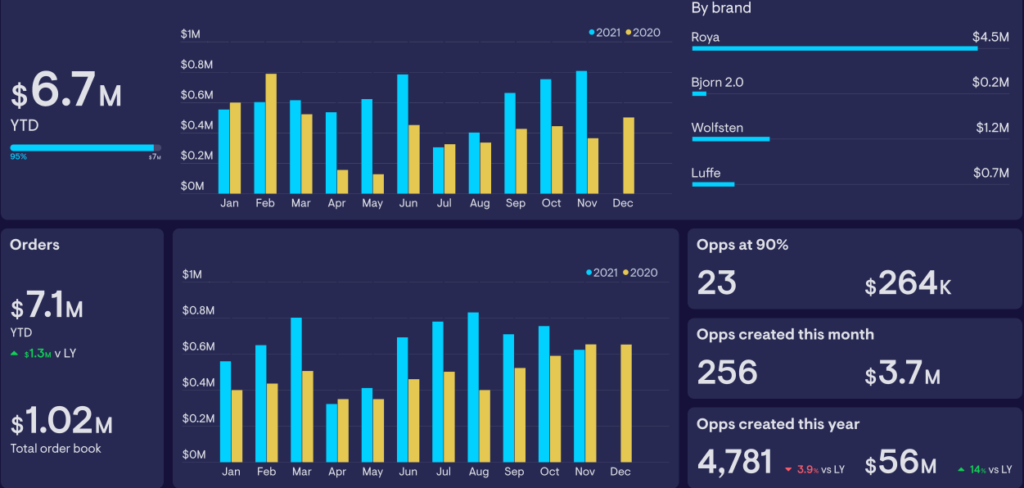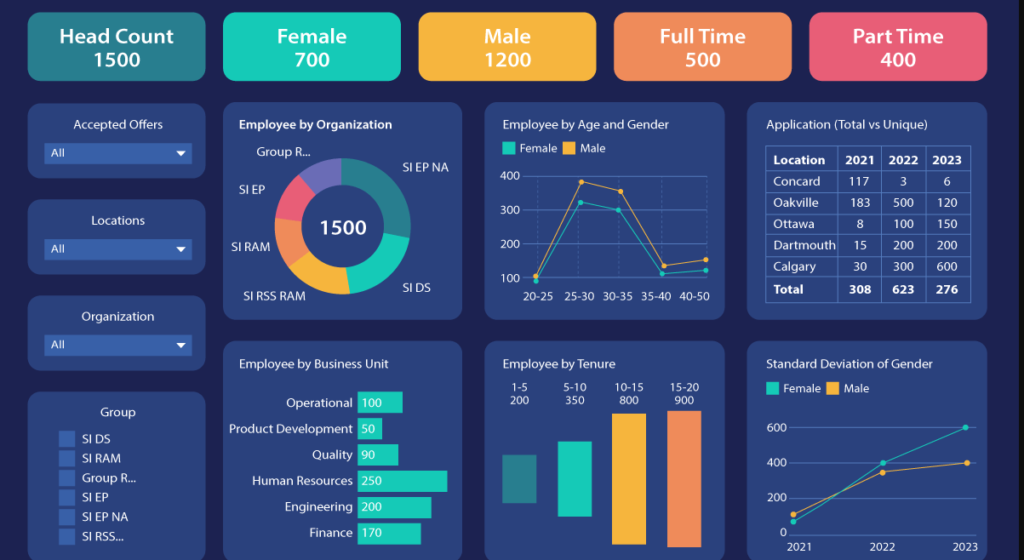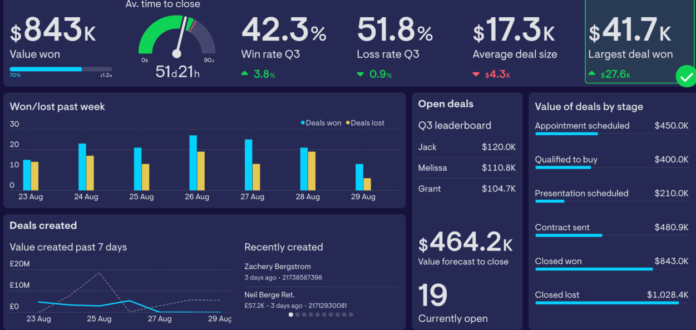Monitoring your marketing, sales, Dashboard and customer service performance is essential to making the appropriate decisions on the daily business competitive agenda. Thus, HubSpot dashboards are a useful tool for tracking important success variables and presenting data instantly to support decisions on process improvement. Hubspot comes with special options on the dashboard to meet distinct groups inside the business where general clean-up is done, and only specific information concerning its health, marketing, and consumer care is offered. We’d like to introduce you to some of the most well-liked HubSpot dashboard examples in this post, which can be used to track the results of various functions and overall business performance.
Table of Contents
1. Sales Performance Dashboard

A sales performance dashbard is essential for every sales-driven business to track the effectiveness of its sales force and the state of its sales pipeline. The sales dashboad of HubSpot may be customised based on the total deal value, the deals in a specific stage, and the conversion rates at different pipeline phases. For example, you can keep track of how many deals are open, how many are closed, how many are later closed and lost, and how many days it takes to finish deals at each stage. Managers and sales representatives can quickly ascertain whether the company has achieved its goals, how far it has to go, where the bottlenecks are, and which parts of the sales cycle are not performing at their best. In order to identify the best performers and provide additional time to those who are falling short, metrics can also be reported at the individual rep level.
2. Marketing Campaign Performance Dashboard
Having a HubSpot dashboard that is exclusively focused on campaigns allows marketing teams to see how well or poorly their various efforts are performing in real time. Other metrics, such as the number of leads produced, website traffic, email click-through rates, and conversion rates from marketing events, can also be tracked with its help. The channel, such as social media, organic traffic, sponsored promotion, or any other, is another feature of a marketing. Marketers can use this information to determine which channels are most effective in generating engagement and sales, allowing them to prioritise those channels. In order to prevent unnecessary expenses, metrics like return on investment (ROI) and cost per lead (CPL) should also be monitored.
3. Customer Service Dashboard

The customer service dashboard is a valuable tool for monitoring customer satisfaction and support staff efficiency in retail establishments and any other business that primarily relies on repeat customer purchases for income. The ability to create dashboards in HubSpot Dashboards support Hub allows you to track key metrics related to customer support, like the number of tickets closed, the time it takes to reply to tickets, and customer satisfaction scores. Businesses can quickly determine where and when the support process is backed up and how to improve service delivery by looking at the response and resolution times of support tickets. To track overall customer satisfaction and potential areas for improvement, it is also feasible to integrate net promoter scores and customer satisfaction surveys into the dashboard.
4. Sales Forecasting Dashboard
Business-to-business organisations looking to balance cash inflows and outflows and predict future income should consider a sales forecasting dashbord essential. One can create a dashbard with HubSpot’s CRM that shows the key sales forecast metrics, such as the amount and closure date. The sales managers can produce accurate replenishment revenue forecasts for the current quarter or year based on the core of ongoing deals. In order to help leadership teams feel secure about their revenue estimates and growth readiness, this dashboad also helps organisations identify trends in deal size, average deal cycle time, and sales velocity.
Conclusion
HubSpot dashboards give companies a special chance to keep an eye on various customer service, sales, and marketing metrics. Custom tailored to the various business operations must be created in order for management to be informed at all times and locations and make decisions that are appropriate for the operation of the company. HubSpot’s dashboads assist teams in optimising their daily tasks, meeting objectives faster than hiring additional employees, and adding value to the business—regardless of the KPIs you’re tracking through sales, marketing, or customer service. By using these dashboad examples, your company may monitor performance and improve the measures that are in place at the same time.



